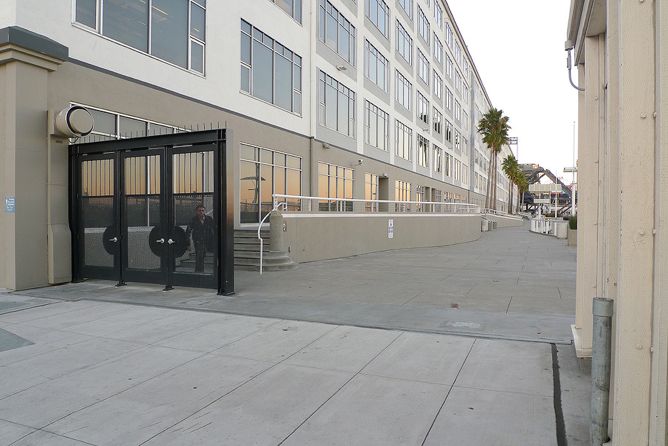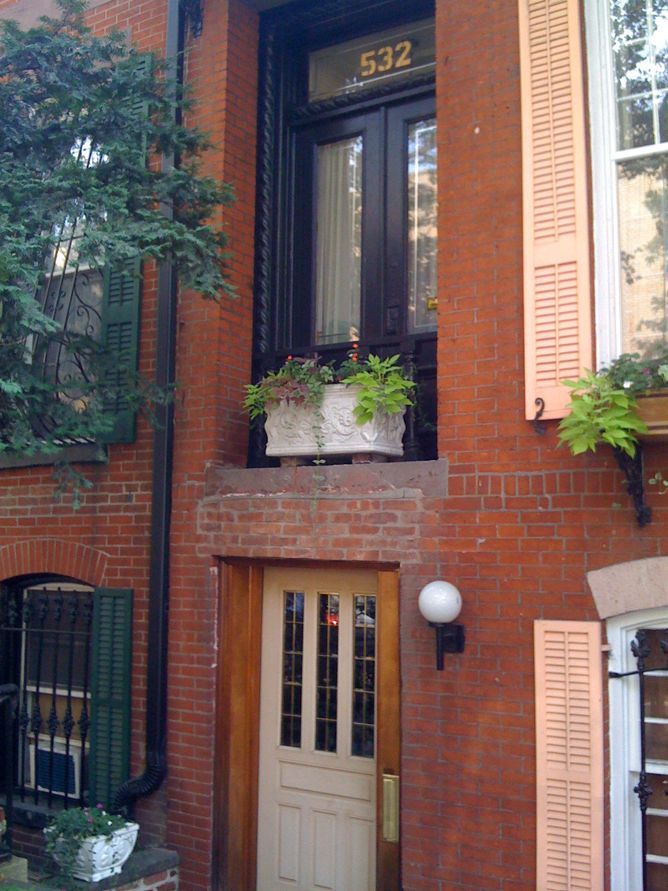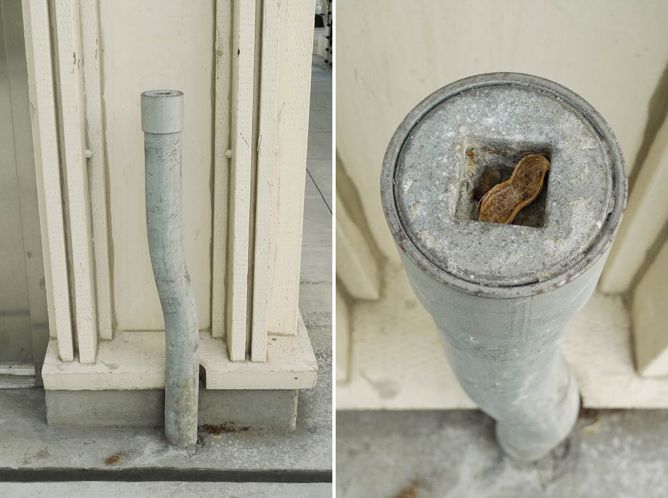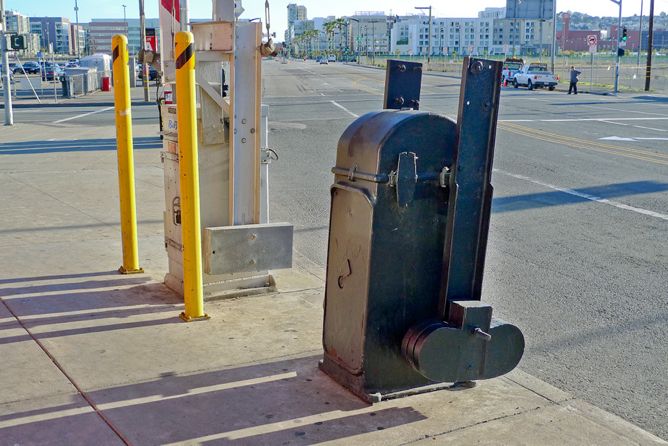There’s a Name for Architectural Relics That Serve No Purpose

Courtesy of Seng Chen
Roman Mars’ podcast 99% Invisible covers design questions large and small, from his fascination with rebar to the history of slot machines to the great Los Angeles Red Car conspiracy. Here at The Eye, we cross-post new episodes and host excerpts from the 99% Invisible blog, which offers complementary visuals for each episode.
This week's edition—about the vestigial urban remnants known as Thomassons—can be played below. Or keep reading to learn more.
Cities, like living things, evolve slowly over time. Buildings and structures get added and renovated and removed, and in this process, bits and pieces get left behind. Vestiges. Just as humans have tailbones and whales have pelvic bones, cities have doors that open into limb-breaking drops, segments of fences that anyone can walk around, and pipes that carry nothing at all.
Most of the time, these architectural leftovers rust or crumble or get taken down. But other times, these vestiges aren’t removed. They remain in the urban organism. And sometimes—even though they no longer serve any discernible purpose—they’re actually maintained. They get cleaned and polished and repainted, just because they’re there.
These urban vestiges first caught the attention of an artist in Japan named Genpei Akasegawa. One day, in 1972, he came across a staircase that went up and then back down but had no door at the top. Then Akasegawa noticed that a piece of the railing had been recently fixed. That’s when something clicked.

Courtesy of Matthew Fargo
Akasegawa started noticing similar urban leftovers and treasured them as artistic byproducts of the city. He photographed all the things he could find that were both vestigial and maintained. He began publishing his findings in a magazine column, accompanied by musings about each object.
People began to send Akasegawa pictures of similar architectural leftovers they found, and in his column, Akasegawa would judge all submissions on two criteria:
1. Were they truly, completely useless?
2. Were they regularly maintained?
In 1985 Akasegawa published a book of these collected photographs and writings, in which he coined a term for these kinds of urban leftovers: “Thomassons.”
The term comes from Gary Thomasson, an American baseball player who was traded to the Yomiuri Giants, a team in Tokyo. Thomasson was paid an exorbitant amount of money for a two-year contract.

Courtesy of Seng Chen
But in this new country, on this new team, the great slugger lost his game. He actually set the all-time strikeout record in Japan in 1981 and was benched for much of his contract.
For Akasegawa, Thomasson was “useless” and also “maintained.”
Through Akasegawa’s writings, the term “Thomasson” spread. The science-fiction writer William Gibson used it in Virtual Light to describe a dystopian, cyberpunk San Francisco: “ ‘I don’t care,’ Yamasaki said, in English, San Francisco his witness. The whole city was a Thomasson. Perhaps America itself was a Thomasson.”
In 2009, Akasegawa’s book Hyperart: Thomasson was published in English translation. The American publishers wanted to get a conversation going stateside. They set up a blog where people could offer up their own potential Thomassons for analysis and debate, much like Akasegawa’s original column. People sent in their Thomassons from around the world. (The blog is now defunct but continues in a different form here.)
Thomasson and his family declined to comment for this story, and that’s understandable, given that the appropriation of his surname in this way does seem rather mean-spirited.

Courtesy of Seng Chen
One could argue, though, that Akasegawa’s appropriation of the name “Thomasson” is a positive thing: Thomasson now joins the ranks of Cardigan, Léotard, Kelvin, Nobel, and Plimsoll—those who live on as eponyms.
To learn more, check out the 99% Invisible post or listen to the show.
99% Invisible is distributed by PRX.
